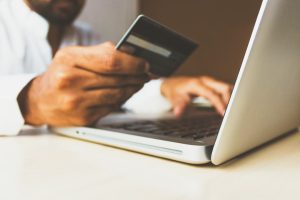As a US forex trader, it can be challenging to find a broker that caters to your specific needs. This is because of the stringent regulations put in place by the US government to protect investors from fraud and other illegal activities. However, with the increasing globalization of the financial markets, there are several options available for US traders to open accounts with non-US brokers. In this article, we will explore how US forex traders can get an account with non-US brokers.
Step 1: Research
The first step to opening an account with a non-US broker is to do your research. Start by identifying reputable brokers that are regulated by recognized financial authorities in their respective countries. Some of the popular jurisdictions include the UK (Financial Conduct Authority), Australia (Australian Securities and Investments Commission), and Cyprus (Cyprus Securities and Exchange Commission).
It is essential to check the broker’s trading conditions and fees, such as spreads, commissions, and overnight fees. Also, ensure that the broker offers the trading platform and instruments you need to trade, such as forex, commodities, indices, and cryptocurrencies.
Step 2: Check if the Broker Accepts US Clients
Once you have identified potential brokers, check if they accept US clients. This information can usually be found on the broker’s website or by contacting their customer support. Some brokers may have restrictions on clients from certain countries or may require additional documentation, such as tax identification numbers or proof of residency.
It is crucial to confirm that the broker accepts US clients because failing to do so could result in your account being closed, frozen, or even facing legal repercussions.
Step 3: Check the Broker’s Compliance with US Regulations
While you may be opening an account with a non-US broker, it is essential to confirm that the broker complies with US regulations. This includes adhering to anti-money laundering laws, reporting requirements, and other regulatory obligations.
Some brokers may have a US subsidiary or partner with a US broker-dealer that can provide additional regulatory oversight. It is also recommended to check if the broker is a member of any regulatory organizations, such as the Financial Industry Regulatory Authority (FINRA) or the National Futures Association (NFA).
Step 4: Choose a Funding Method
Once you have selected a broker and confirmed their compliance with US regulations, the next step is to choose a funding method. This includes options such as wire transfer, credit/debit cards, e-wallets, and cryptocurrencies.
It is important to note that some funding methods may incur additional fees or have processing times that could affect your trading strategy. Also, ensure that the funding method you choose complies with US regulations and does not violate any anti-money laundering laws.
Step 5: Open the Account and Start Trading
The final step is to open the account and start trading. The process may differ between brokers, but it typically involves completing an online application form and providing the necessary documentation, such as a passport or driver’s license, proof of address, and proof of funding.
Once your account is approved, you can begin trading by logging into the broker’s platform and placing orders. Remember to adhere to proper risk management practices and stay up to date with the latest market news and trends.
Conclusion
Opening an account with a non-US broker as a US forex trader requires careful research and due diligence. It is essential to identify reputable brokers that comply with US regulations and accept US clients. Also, choosing a funding method that complies with US regulations and adhering to proper risk management practices are crucial to successful trading. With the right broker and strategy, US forex traders can take advantage of the global financial markets and achieve their trading goals.





